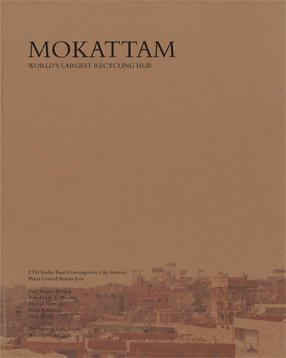Mokattam
World's largest recycling hub

Students: Flavia Conrad, Vanessa Joos
Location: Cairo
Date: October, 2010
Type: Research project, student work
The area of Manshiyat Naser is most famously known as the “Garbage City”, where the Zabbaleen or trash collectors of Cairo bring the daily tonnage of the city’s garbage to be sorted and recycled here. This informal economy of the area forms an enclave of specialization of livelihood and the lack of formal infrastructures takes place in an otherwise urban neighborhood of city parts such as shops, apartments and daily city activities.
Located against the hills of Moqattam, the Cave Cathedral or St Sama’ans Church, used by the Coptic Christians is the largest church in the Middle East with seating for 15,000 people and has become somewhat of a tourist attraction. Coptic Christians, a 5-11millions minority in Egyt, were originally the predominant inhabitants of Manshiyat Naser, though in recent decades the area’s Muslim population has grown. The Zabbaleen, nearly all of them Coptic Christians, are well known for herding swine within the city, which are fed edible pieces of garbage and marketed across Cairo to Coptic Christian establishments. In the spring of 2009, the Egyptian government, in response to the worldwide threat of swine flu, embarked on a massive program to slaughter 250000 swine. Angry Zabbaleen protested in Manshiyet Naser against discrimination and some see the porcicide as a plot by welathy businessmen to uproot the Zabbaleen and seize their valuable land on the edget of the city. Bordered on the west by the cemetary areas—Cities of the Dead—and nestled against the Moqattam hills of Cairo to the east, its location on the route between upper middle class Madinat Nasr to the east and the upper middle class Maadi to the south bodes it for upgrading proposals in the Cairo 2050 Plan, where housing in the middle of greens are currently planned. The area’s proximity to the city center and its location along the ring road marks it the perfect node for speculative activities of the future.
This topic will look at the intersection of the informal economy and the semi-touristic treatment of the Coptic church area as well the neighborhood’s context as a
Coptic Christian hub with a specialized livelihood. The conjunctions, both physical and socio-economical, are to be documented and analyzed alongside the everyday activities that take place here.
Download the Book PDF

